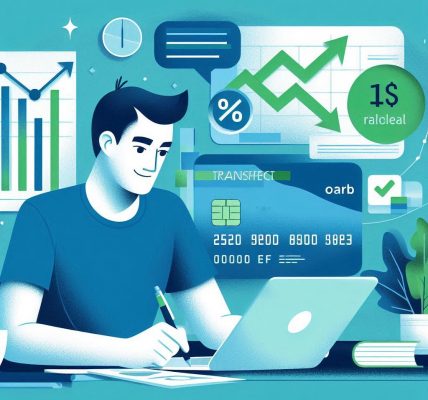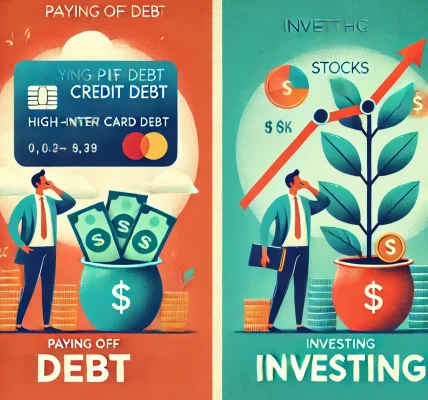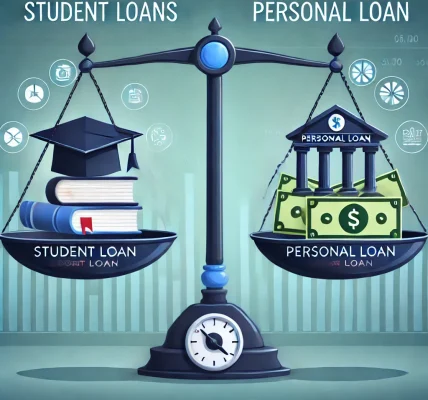Debt is an integral part of personal and business finance, but not all debt is the same. Understanding the differences between secured and unsecured debt can help you make better financial decisions, manage risk, and improve your creditworthiness. This guide will break down the key differences, advantages, disadvantages, and how each type of debt impacts your financial future.
What is Secured Debt?
Secured debt is backed by collateral, meaning the lender has a legal claim to an asset if the borrower fails to repay the loan. The collateral reduces risk for lenders, often resulting in lower interest rates.
Examples of Secured Debt
- Mortgage Loans – The property serves as collateral.
- Auto Loans – The vehicle is the collateral.
- Secured Credit Cards – Backed by a cash deposit.
- Home Equity Loans – Uses the home as collateral.
- Title Loans – Based on the value of an asset (e.g., a car title).
Pros of Secured Debt
✔️ Lower Interest Rates – Because lenders have collateral, they offer lower rates. ✔️ Higher Borrowing Limits – More security allows you to borrow larger amounts. ✔️ Easier Approval – Even with lower credit scores, secured loans are often approved. ✔️ Potential Credit Score Improvement – Regular payments can improve credit history.
Cons of Secured Debt
❌ Risk of Losing Collateral – If you default, the lender can seize your asset. ❌ Longer Loan Terms – Some secured debts, like mortgages, have long repayment periods. ❌ Strict Approval Process – Lenders assess the collateral value and financial situation.
What is Unsecured Debt?
Unsecured debt does not require collateral, meaning lenders rely on your creditworthiness to approve loans. Since there is no asset backing, interest rates are typically higher.
Examples of Unsecured Debt
- Credit Cards – Borrow without collateral but with high interest.
- Personal Loans – Issued based on income and credit history.
- Student Loans – Some government-backed loans do not require collateral.
- Medical Bills – Unsecured obligations for healthcare expenses.
- Retail Store Financing – Buy-now-pay-later options without collateral.
Pros of Unsecured Debt
✔️ No Risk to Assets – You don’t risk losing property if you default. ✔️ Faster Approval – Typically quicker than secured loans. ✔️ More Flexible Usage – Used for a variety of purposes, from emergencies to vacations. ✔️ Potential for Higher Credit Score – Proper management builds credit history.
Cons of Unsecured Debt
❌ Higher Interest Rates – More risk to lenders means higher costs for borrowers. ❌ Lower Borrowing Limits – Lenders may offer smaller loan amounts. ❌ Harder to Qualify – Strong credit scores and income are usually required. ❌ Debt Collection Risks – If unpaid, accounts may be sent to collections, harming your credit.
Key Differences Between Secured and Unsecured Debt
| Feature | Secured Debt | Unsecured Debt |
|---|---|---|
| Collateral | Required (e.g., home, car) | Not required |
| Interest Rates | Lower | Higher |
| Approval Process | Strict (collateral assessment) | Flexible (credit-based) |
| Borrowing Limit | Higher | Lower |
| Risk | Losing asset if defaulted | No asset risk, but potential credit damage |
| Examples | Mortgage, Auto Loan | Credit Cards, Personal Loans |
Which Type of Debt is Right for You?
Choosing between secured and unsecured debt depends on your financial situation, goals, and risk tolerance.
When to Choose Secured Debt:
✅ You need a large loan amount (e.g., home, car purchase). ✅ You want lower interest rates and manageable monthly payments. ✅ You have valuable assets to use as collateral. ✅ You need easier approval despite a lower credit score.
When to Choose Unsecured Debt:
✅ You don’t have assets or don’t want to risk them. ✅ You need quick access to funds for emergencies. ✅ You want flexibility in how you use the funds. ✅ You have a strong credit score that qualifies for low rates.
How Secured and Unsecured Debt Affect Your Credit Score
Both types of debt impact your credit score based on how well you manage payments.
🔹 Payment History (35%) – On-time payments improve your credit, while missed payments hurt it. 🔹 Credit Utilization (30%) – Using a high percentage of available credit on unsecured loans may lower your score. 🔹 Length of Credit History (15%) – Older accounts help build a strong credit profile. 🔹 New Credit Inquiries (10%) – Too many hard inquiries from loan applications can temporarily reduce your score. 🔹 Credit Mix (10%) – A combination of secured and unsecured debt can boost your score if managed well.
Pro Tip: Avoid maxing out unsecured credit cards, as high utilization can negatively affect your credit score.
How to Manage Secured and Unsecured Debt Wisely
1️⃣ Make Payments On Time – Prevent late fees and protect your credit score. 2️⃣ Keep Debt-to-Income Ratio Low – Borrow only what you can afford to repay. 3️⃣ Refinance When Possible – Lower interest rates through refinancing secured loans. 4️⃣ Avoid Unnecessary Debt – Only take loans when essential. 5️⃣ Monitor Credit Reports – Check for errors and fraudulent accounts regularly. 6️⃣ Build an Emergency Fund – Reduce reliance on high-interest unsecured loans.
Final Thoughts: The Importance of Choosing the Right Debt
Understanding the difference between secured and unsecured debt is crucial for financial success. While secured debt offers lower interest rates and higher loan amounts, it comes with the risk of losing assets. Unsecured debt provides flexibility but often has higher costs and strict qualification criteria.




